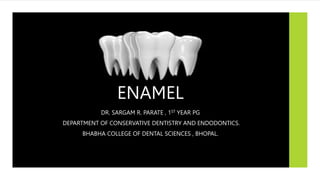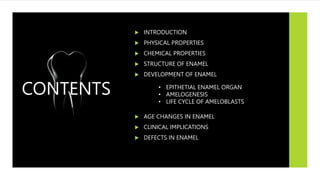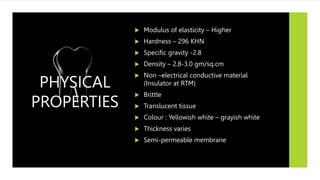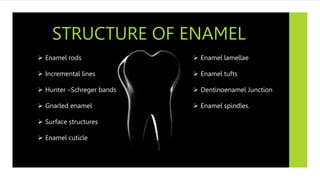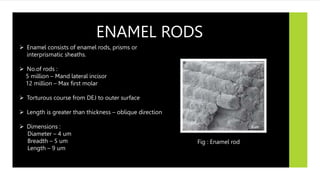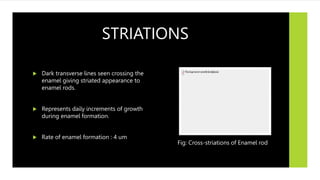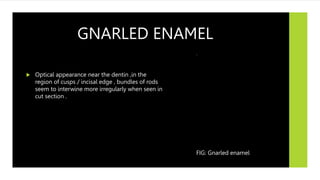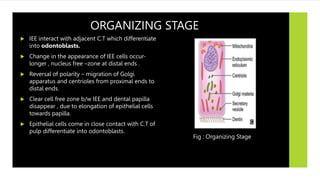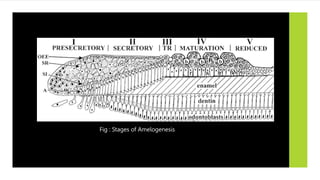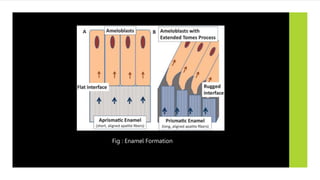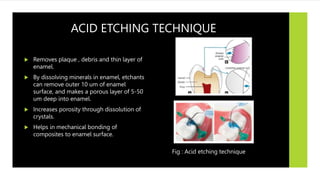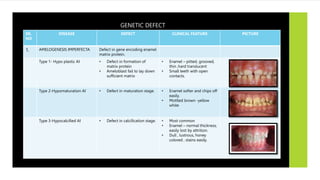The document provides an in-depth overview of enamel, detailing its physical and chemical properties, structural components, and development stages. It emphasizes the significance of enamel's hardness and unique composition, describing the processes involved in its formation and maturation, as well as clinical implications such as susceptibility to decay. Additionally, it addresses various structural features like enamel rods, lamellae, and tufts, and highlights their roles in dental health and disease.
